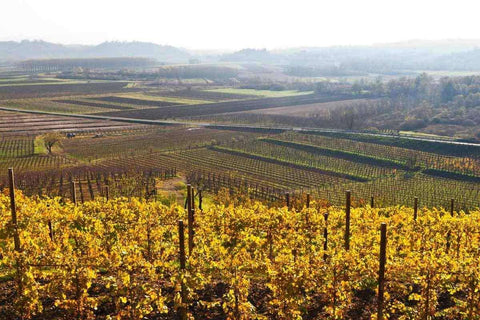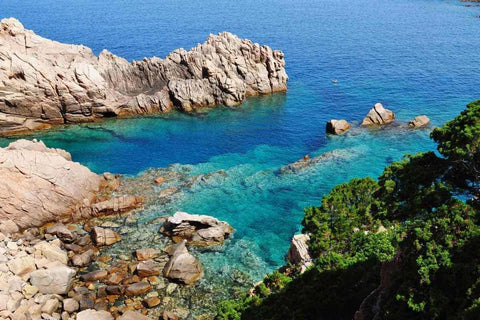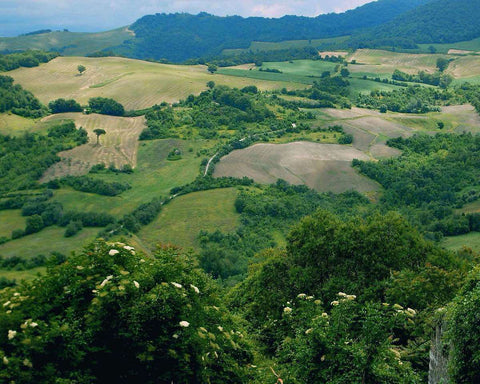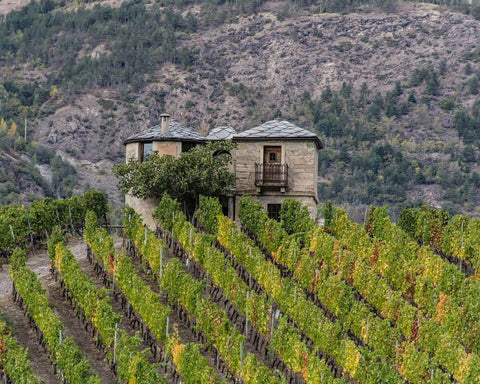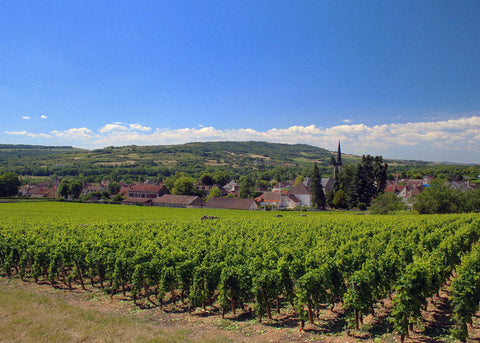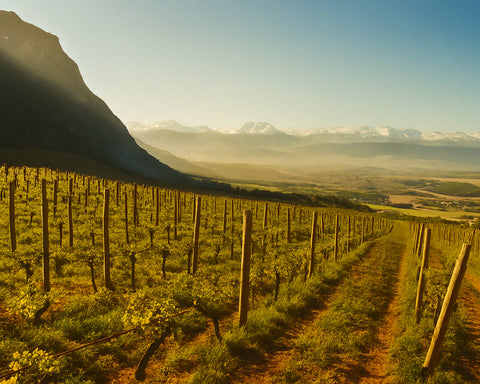Friuli-Venezia Giulia, situated in northeastern Italy, is celebrated for its rich history, diverse cultures, and picturesque landscapes. Bordered by Austria to the north and Slovenia to the east, Friuli-Venezia Giulia is renowned for its unique blend of natural beauty, architectural wonders, and culinary delights, making it one of Italy's most captivating and storied regions.
Over the centuries, Friuli-Venezia Giulia has evolved into a dynamic and culturally rich region, with a strong emphasis on preserving its historical heritage while embracing modern advancements.
The region's wines, influenced by its varied terroir and climate, are celebrated for their distinctiveness and quality, reflecting Friuli-Venezia Giulia's enduring dedication to viticulture and oenological excellence.
Table of Contents
History of Friuli-Venezia Giulia
Friuli-Venezia Giulia, strategically positioned at the crossroads of Latin, Germanic, and Slavic cultures, has been a region of significant historical importance. Its history is a rich tapestry woven from the influences of ancient tribes, Romans, Byzantines, Lombards, Venetians, and Austro-Hungarians, each leaving an indelible mark on the region's culture and traditions.
The region's Roman period began in the 2nd century BCE, marking the start of Friuli-Venezia Giulia's rich cultural heritage. The Romans founded several cities, including Aquileia, which became an important center of trade and culture. These ancient cities flourished, leaving behind impressive ruins and architectural wonders that continue to draw admiration today.
Following the fall of the Roman Empire, Friuli-Venezia Giulia underwent various transformations under the Byzantines and Lombards. The Lombard Duchy of Friuli was established in the 6th century, marking a significant cultural and political development period. The region later came under the influence of the Venetian Republic, which impacted its architecture and culture.
The Habsburgs controlled the region in the 18th and 19th centuries, integrating it into the Austro-Hungarian Empire. This period saw significant economic and infrastructural development, further enriching the cultural landscape of Friuli-Venezia Giulia.
The 19th century was a significant change for Friuli-Venezia Giulia. The region played a pivotal role in the Risorgimento, the movement for Italian unification. In 1866, Friuli was annexed to the Kingdom of Italy, followed by Venezia Giulia after World War I. This period also saw the growth of the region's modern wine industry, with vineyards being replanted and new winemaking techniques introduced.
The 20th century brought challenges and advancements to Friuli-Venezia Giulia. The region faced economic hardships during the World Wars, but its resilient spirit and cultural richness helped it navigate these difficulties. The post-World War II period saw significant development in infrastructure, tourism, and the wine industry, establishing Friuli-Venezia Giulia as a prominent player on the global stage.
Terroir of Friuli-Venezia Giulia
Friuli-Venezia Giulia's terroir is as diverse as its history, characterized by various microclimates, soil types, and elevations. The region's varied landscape, from the alpine areas in the north to the Adriatic coast in the south, is crucial in shaping its unique viticultural landscape.
The region enjoys a continental climate with hot summers and cold winters. This climate, combined with the influence of the Alps and the Adriatic Sea, creates ideal conditions for grape cultivation. The plains and valleys benefit from fertile alluvial soils, while the hilly areas offer well-drained soils with a mix of clay, sand, and limestone.
The Geology of Friuli-Venezia Giulia
Friuli-Venezia Giulia's geology is marked by its diverse soil types, providing a fertile ground for vines to thrive.
- Collio: Known for its "ponca" soils, a mix of marl and sandstone, which provide excellent drainage and mineral content, essential for growing high-quality grapes. The region is famed for its white wines.
- Grave: The plains of the Grave area are known for their gravelly soils, which are ideal for growing a variety of grape types. This area produces both white and red wines.
- Carso: Characterized by limestone and red soil, Carso offers unique conditions for producing distinctive wines particularly the local variety Terrano.
The diverse terroir of Friuli-Venezia Giulia allows for the cultivation of a wide range of grape varieties, each expressing the unique characteristics of its growing region.
Climate and its Influence
Friuli-Venezia Giulia's climate is predominantly continental, characterized by hot summers, cold winters, and moderate rainfall. The region's varied topography and proximity to the Alps and the Adriatic Sea create numerous microclimates, each contributing to the distinctiveness of the region's wines.
The Grapes of Friuli-Venezia Giulia
Friuli-Venezia Giulia is home to several indigenous grape varieties, each adapted to the region's unique terroir. The most notable are Friulano, Ribolla Gialla, Refosco, and Picolit.
White Grape Varietals
- Friulano: The flagship white grape of Friuli-Venezia Giulia, known for its almond notes and crisp acidity.
- Ribolla Gialla: Known for its bright acidity and citrus flavors, producing fresh and aromatic wines.
- Malvasia Istriana: Offers floral and spicy notes, creating complex and aromatic wines.
- Picolit: Used to produce sweet dessert wines with honeyed and floral notes.
Red Grape Varietals
- Refosco dal Peduncolo Rosso: The flagship red grape of Friuli-Venezia Giulia, known for its deep color, high acidity, and dark fruit flavors.
- Schioppettino: Known for its peppery notes and vibrant acidity, producing elegant and spicy wines.
- Terrano: Grown in the Carso area, it produces robust wines with high acidity and dark fruit flavors.
- Pignolo: A rare variety producing full-bodied wines with rich tannins and dark fruit flavors.
Top Wines of Friuli-Venezia Giulia
Friulano: The quintessential white wine of Friuli-Venezia Giulia, Friulano is celebrated for its crisp acidity, almond notes, and excellent aging potential. It is a versatile wine that pairs well with a variety of dishes.
Ribolla Gialla: Known for its bright acidity and citrus flavors, Ribolla Gialla wines are fresh and aromatic, reflecting the region's unique terroir.
Refosco dal Peduncolo Rosso: The flagship red wine of Friuli-Venezia Giulia, Refosco dal Peduncolo Rosso is valued for its deep color, high acidity, and dark fruit flavors. It is a versatile wine that pairs well with rich meats and game.
Other Notable Wines: Friuli-Venezia Giulia also produces a range of other exceptional wines, including Schioppettino, known for its peppery and spicy notes, and Picolit, a sweet dessert wine with honeyed and floral notes.
Cuisine and Typical Products of Friuli-Venezia Giulia
Friuli-Venezia Giulia's cuisine reflects the region's diverse cultural influences and abundant natural resources. The cuisine is renowned for its bold flavors, fresh ingredients, and innovative use of meats, cheeses, and seafood, making it one of Italy's most distinctive regional cuisines.
Seafood plays a central role in Friuli-Venezia Giulia's cooking, with dishes like "Brodetto," a fish stew with fresh seafood, tomatoes, and herbs, exemplifying the region's culinary creativity. The fertile land also yields various fruits, vegetables, and grains, integral to many traditional dishes.
Among the region's most prized products are its cured meats, particularly Prosciutto di San Daniele, and its cheeses, such as Montasio. These ingredients are used in various dishes, from savory to sweet, showcasing the versatility and richness of Friuli-Venezia Giulia's produce.
Friuli-Venezia Giulia Antipasti
In Friuli-Venezia Giulia, a meal often begins with a selection of antipasti, highlighting the region's diverse flavors. A typical antipasti spread might include:
- Prosciutto di San Daniele: Thinly sliced ham served with melon or figs.
- Frico: A crispy cheese and potato pancake.
- Jota: A traditional soup made with beans, sauerkraut, potatoes, and pork.
- Sarde in Saor: Marinated sardines with onions, raisins, and pine nuts.
Friuli-Venezia Giulia Primi Piatti (First Courses)
The first course in a Friuli-Venezia Giulia meal often features pasta, risotto, or hearty soups, showcasing the region's grains and vegetables.
- Risotto alla Friulana: A creamy risotto with local herbs and white wine.
- Gnocchi di Susine: Potato dumplings filled with plums, reflecting the region's Austro-Hungarian influences.
- Cjarsons: Sweet and savory stuffed pasta, unique to Friuli.
- Orzotto: A barley risotto with seasonal vegetables and herbs.
Friuli-Venezia Giulia Secondi (Second Courses)
Friuli-Venezia Giulia's second courses often highlight the region's abundant seafood and high-quality meats.
- Brovada e Muset: A traditional dish of fermented turnips and cotechino sausage.
- Fegato alla Veneziana: Venetian-style liver cooked with onions and white wine.
- Baccalà alla Triestina: Salt cod cooked with potatoes, tomatoes, and olives.
- Anatra all'Arancia: Duck with orange sauce, a dish with Venetian roots.
Friuli-Venezia Giulia Contorni (Side Dishes)
Friuli-Venezia Giulia cuisine celebrates vegetables, with many side dishes highlighting the region's produce.
- Radicchio di Treviso: Grilled radicchio with balsamic vinegar.
- Asparagi di Bassano: White asparagus served with a sauce of eggs, lemon, and olive oil.
- Patate in Tecia: Potatoes sautéed with onions and bacon.
Friuli-Venezia Giulia Formaggi (Cheeses)
Friuli-Venezia Giulia produces a variety of cheeses, reflecting the region's agricultural diversity.
- Montasio: A semi-hard cheese with a nutty flavor, often used in cooking or enjoyed on its own.
- Formadi Frant: A mixed cheese made from various types of milk, known for its intense flavor.
- Tabor: A soft cheese with a delicate flavor produced in the Carso area.
- Ricotta Affumicata: Smoked ricotta cheese with a unique flavor.
Friuli-Venezia Giulia Dolci (Dessert)
Friuli-Venezia Giulia desserts often feature nuts, dried fruits, and local wines, creating a range of sweet treats.
- Gubana: A spiral cake filled with dried fruits, nuts, and spices.
- Strucchi: Fried or baked pastries filled with nuts and dried fruits.
- Presnitz: A pastry roll filled with a mixture of nuts, chocolate, and spices.
- Biscotti di Riso: Rice flour cookies are often flavored with lemon or vanilla.
Typical Products of Friuli-Venezia Giulia
Friuli-Venezia Giulia's cuisine is grounded in high-quality local products, many of which have achieved protected status, ensuring their authenticity and traditional production methods.
Prosciutto di San Daniele
Prosciutto di San Daniele is celebrated for its delicate flavor and tender texture. This ham is made from carefully selected pork legs and aged for at least 13 months, which symbolizes the region's culinary excellence.
Montasio
Montasio, a semi-hard cheese made from cow's milk, is known for its nutty flavor and versatile use in cooking. Aged for varying lengths, it can be enjoyed young or mature, each offering a unique taste experience.
Balsamic Vinegar
Traditional Balsamic Vinegar of Modena is made from the must of Trebbiano and Lambrusco grapes, aged for a minimum of 12 years in wooden barrels. Its complex flavor is prized in both savory and sweet dishes.
Ramandolo
Ramandolo is a sweet dessert wine made from Verduzzo grapes grown in the hills of the Natisone Valley. Its rich, honeyed flavor and golden color make it a perfect pairing for desserts and cheese.
More on Friuli-Venezia Giulia's History
- Ancient Foundations
- Roman and Medieval Periods
- Renaissance Flourish
- Modern Unification
- Friuli-Venezia Giulia Today
Ancient Foundations
Friuli-Venezia Giulia's history dates back to ancient times, with evidence of human settlements from the Upper Paleolithic period. The region's strategic position attracted ancient peoples, including the Veneti and Celts, who significantly influenced its culture and development.
Roman and Medieval Periods
The Roman period, starting in the 2nd century BCE, saw Friuli-Venezia Giulia become a center of Roman civilization, with important cities like Aquileia and Cividale del Friuli flourishing. The medieval period brought the rise of powerful city-states and communes, contributing to the region's cultural and intellectual life.
Renaissance Flourish
The Renaissance marked a period of artistic and cultural flourishing for Friuli-Venezia Giulia. The region saw the patronage of artists and scholars, leaving a rich legacy of Renaissance art and architecture. The University of Padua, although located just outside the region, influenced the intellectual climate significantly.
Modern Unification
In 1866, Friuli was annexed to the Kingdom of Italy, followed by Venezia Giulia after World War I. This period was marked by modernization and economic development, with significant infrastructure, industry, and agriculture advancements.
Friuli-Venezia Giulia Today
Today, Friuli-Venezia Giulia is a vibrant region known for its rich history, diverse culture, and stunning landscapes. Its economy is bolstered by agriculture, industry, tourism, and a growing technology sector. Friuli-Venezia Giulia continues to cherish its historical sites, unique cuisine, and a blend of cultural influences, making it a fascinating microcosm of Italian history.
